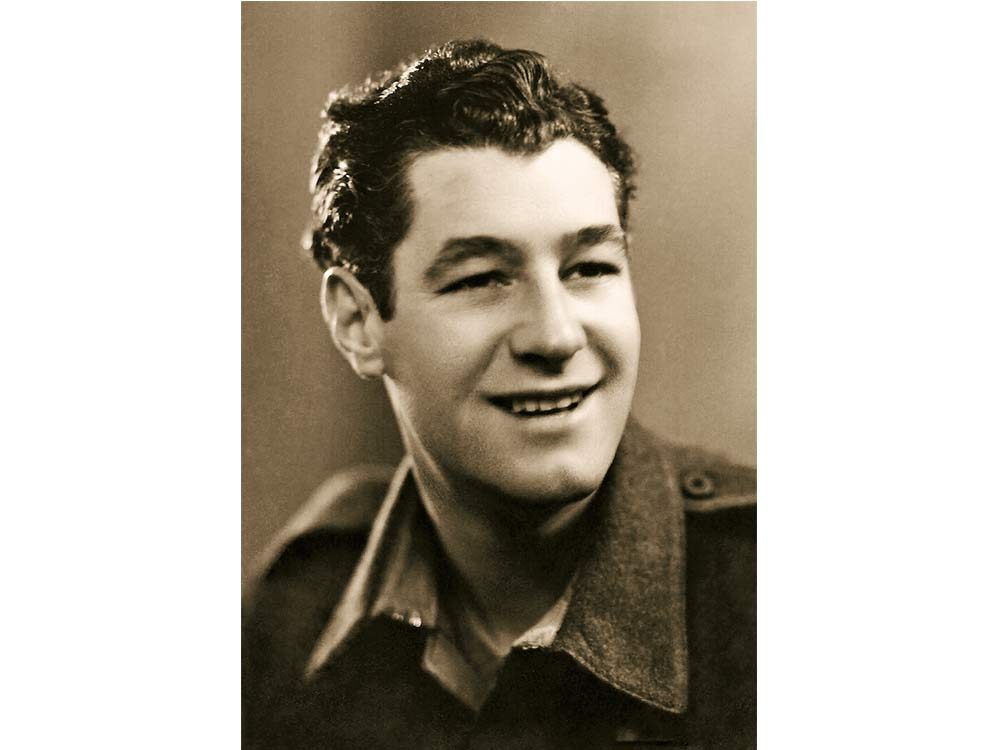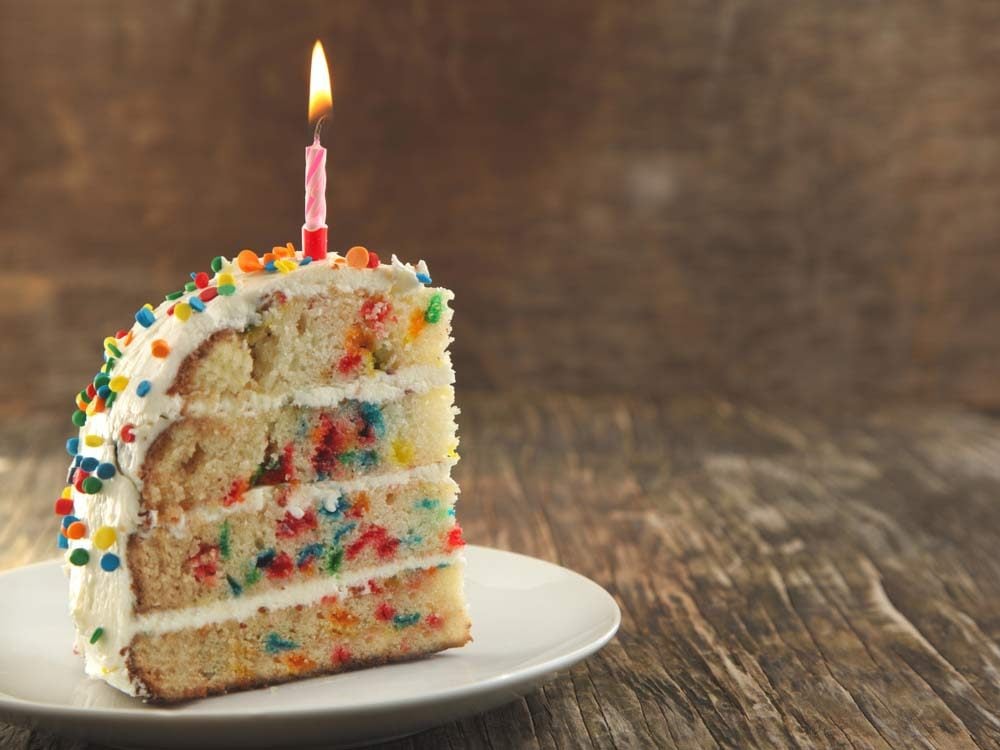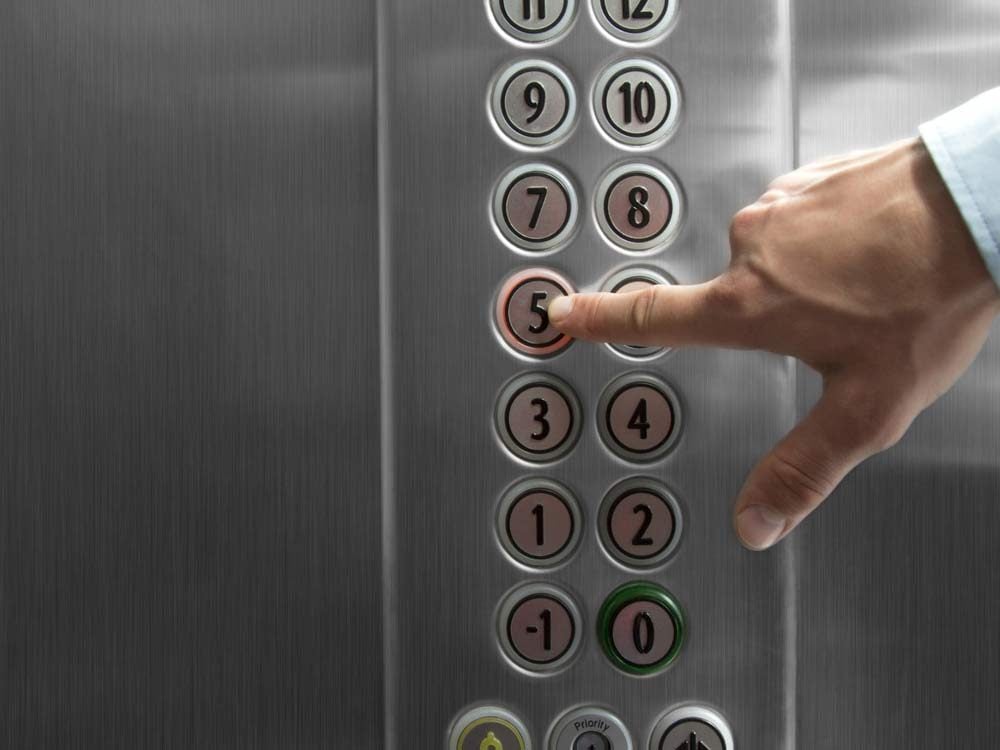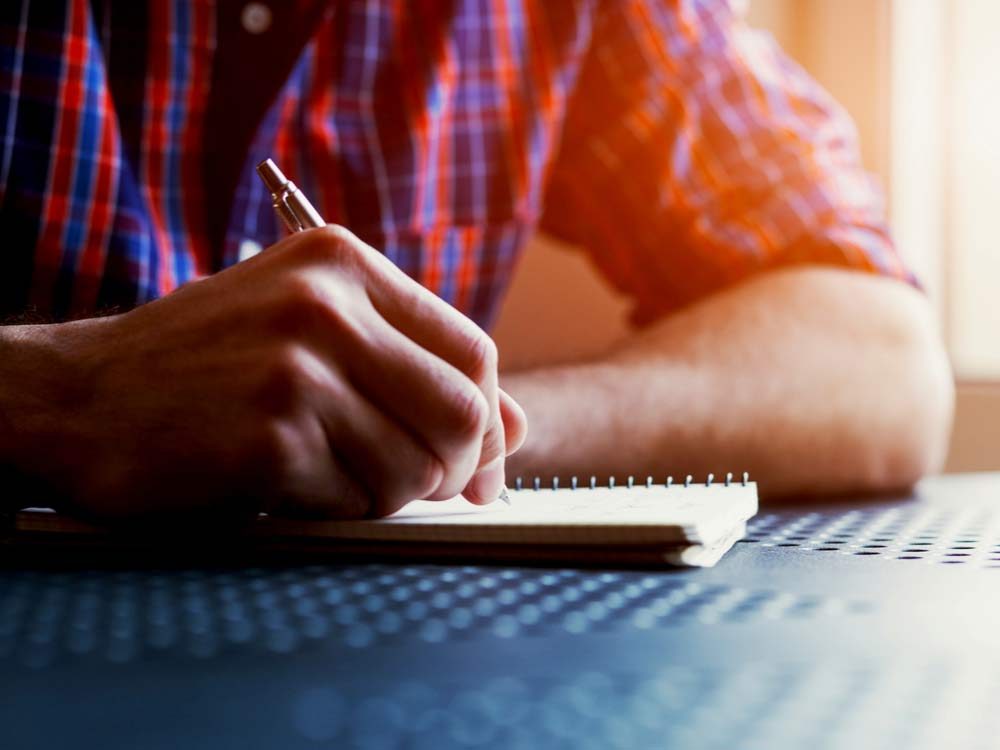
Veteran Profile: Charles Davis
Charles was born on Sept. 27, 1922, in London, Ont. He joined the Canadian army at 18 with the 69th Battery, Royal Canadian Artillery Regiment, but transferred to the Royal Canadian Service Corps in September 1942. A veteran of the Normandy campaign, he landed on Juno Beach on D-Day “Plus 4” (June 10, 1944).
“They gave us this big pack of waterproofing and we packed it all around the truck; anything where the water would come in was waterproofed. We had 155-mm fixed ammunition shells as our cargo…”
Charles was discharged in 1946 and now lives in Windsor, Ont.
For more profiles by Veterans Voices of Canada, click here.
Ever Wonder Why Dogs Stick Their Heads Out of Car Windows?
Of course, nobody has been able to interview canines on the subject, but the consensus is that dogs like to put their heads out of car windows because they are visually curious. Many dogs are not tall enough to have an unobstructed view of the outside world from the front seat, and most dogs are too short to have any forward or rearward view from the back seat. Poking their head out of the window is a good way to check out their surroundings and enjoy a nice, cool breeze sat the same time.
But blowing in a dog’s ear, even gently, can hurt it, not because of the softness of the skin or the sensitivity of the nerves, but because of the sound of the blowing. Veterinarian Ben Klein told us that one of the ways a dog is tested for deafness is by the vet blowing into the ear through a funnel; if the dog doesn’t get upset, it’s an indication of deafness. So while we may associate blowing into the ear of a dog as playfulness or to a human mate as a sexual overture, to the dog it is the canine equivalent of scratching a blackboard with fingernails. The frequency of the sound drives them nuts. Although different dog breeds have varying sensitivities to ear-blowing, all are bothered by it. Avoid making the mistake of annoying particularly aggressive dogs, they could retaliate unexpectedly.
Dr. William E. Monroe, of the American College of Veterinary Internal Medicine, adds that the external ears of dogs are full of sensory nerves that help to prevent trauma injuries and preserve hearing: By preventing debris (sand, wood chips, etc.) from entering the ear canal, damage to the ear and hearing is prevented. Thus, avoiding air in the ear could have survival advantage. The ear can’t trap all the debris a dog must contend with. In fact, Dr. Klein mentioned that sticking their heads out of car windows is one of the major causes of ear infections in dogs.
Next thing we know, we’ll have to install seat belts for dogs.
Check out 53 Secrets Pets Won’t Tell You.

White, marble, chocolate, German chocolate, ice cream: There are hundreds of types of birthday cake in the world, each beautiful in its own sugary way. Odds are, you’ve indulged in one during at least one (hopefully all) of your birthday parties. But in between delicious bites of cake and frosting, have you ever stopped and wondered, “Why am I eating this? What makes this dessert fit to commemorate the day of my birth?”
It’s because you are as important and beloved as the gods. Kind of.
The ancient Egyptians are credited with “inventing” the celebration of birthdays. They believed when pharaohs were crowned, they became gods, so their coronation day was a pretty big deal. That was their “birth” as a god.
Ancient Greeks borrowed the tradition, but rightfully realized that a dessert would make the celebration all the more meaningful. So they baked moon-shaped cakes to offer up to Artemis, goddess of the moon, as tribute. They decorated them with lit candles to make the cakes shine like the moon. Hence, the reason we light our birthday cakes on fire.
Modern birthday parties are said to get their roots from the 18th century German celebration “Kinderfeste.” On the morning of a child’s birthday, he or she would receive a cake with lighted candles that added up to the kid’s age, plus one. This extra candle was called the “light of life,” representing the hope of another full-year lived.
And then, torture—because no one could eat the cake until after dinner. The family replaced the candles as they burned out throughout the day. Finally, when the moment came, the birthday child would make a wish, try to blow out all the candles in one breath, and dig in. Like modern tradition, the birthday girl or boy wouldn’t tell anyone the wish so it would come true.
Since the ingredients to make cakes were pretty expensive, this birthday custom didn’t become popular until the Industrial Revolution. More ingredients were available, which made them cheaper, and bakeries even started selling pre-baked cakes.
Here’s why Queen Elizabeth celebrates two birthdays every year.

Respiratory droplets—the medical community’s polite term for what comes out of a person when they sneeze or cough—are filled with the germs that made the person sick. When we cough or sneeze, they disperse widely, landing here and there, where they wait patiently for someone to touch them (research shows they can remain potent for several hours). Once on someone’s hands, they stand a good chance of infecting them, since it is human nature to frequently touch our faces. This is exactly how colds and flu happen: The vast majority of cases are passed from person to person. Think of things that are touched by many people in a day, and you’ll come up with the places where germs are shared. These can include:
- Handrails
- Elevator buttons
- Grocery cart handles
- Restaurant menus
- Money from a cash register
- Light switches
- Salt and pepper shakers in restaurants
- Salad bars
- ATMs
- Exercise equipment
- Water fountain handles
Makes you nervous, doesn’t it? Relax. It takes just a little common sense and attention to protect yourself from public germs. Here are ways to keep germs at bay:
- Handwashing. Always wash your hands before cooking, eating or inserting your contact lenses. Wash your hands after cooking, using the toilet, petting an animal, handling garbage, blowing your nose, or coughing or sneezing into your hand. It doesn’t matter if you wash with regular or antibacterial soap as long as you do a thorough job.
- Use hand sanitizer. Alcohol-based sanitizers that require no water are among the greatest health inventions of recent times. They’re efficient at killing germs, whenever and wherever you encounter them, without the need of water or towels.
- Keep hands away from your face. No matter how many times you wash them, if you are in public, your hands will pick up germs. Germs will quickly enter your body if you rub your eyes or nose, stroke your chin, or touch your lips.
- Avoid the communal candy bowl or cookie jar. Given that only 67 per cent of people who say they wash their hands actually do, and that only a third of those people use soap, you can imagine what’s lurking in there.
Check out 13 Things You Didn’t Know About Germs.

The real story behind the smiley face
The Mona Lisa might have the most iconic smile in history, but one could argue the yellow smiley face comes pretty close.
What began as an unusual assignment for graphic designer Harvey Ball eventually turned into a world-famous symbol of happiness. In fact, the smiley face can trace its modest origins back to an insurance company in Worcester, Massachusetts in 1963.
After a series of tough transitions, the company’s employees struggled to maintain a cheery workplace. So, the company hired Ball in the hopes that he would design an image to boost morale. In just 10 minutes, Ball drew a simple, smiling face on a yellow background. The price for his genius masterpiece? Only $45.
At first, the company simply printed the face on buttons and posters to give to its employees. But the image quickly gained popularity, and yellow smiley faces started popping up on everything from greeting cards to T-shirts to stickers. Neither Ball nor the insurance company trademarked the soon-to-be iconic design.
“The simple yellow smiley face created in 1963 (probably) has led to tens of thousands of variations and has appeared on everything from pillows and posters to perfume and pop art,” according to the Smithsonian. “Its meaning has changed with social and cultural values: from the optimistic message of a 1960s insurance company, to commercialized logo, to an ironic fashion statement, to a symbol of rave culture imprinted on ecstasy pills, to a wordless expression of emotions in text messages.”
Over time, many legal battles ensued over who could truly claim ownership over the legendary design. (At one point, even Walmart got involved!) But it’s still widely accepted that Ball was the first to invent the iconic yellow smiley face.
Regardless of its origins, one thing is clear. While initially intended to cheer up a small company in Massachusetts, the smiley face’s positive message now reaches across the world.
Think that was interesting? Check out 22 History Lessons Your Teacher Lied to You About.

Margaret Trudeau inspired this shade of lipstick
Margaret Trudeau’s name was on everyone’s lips in 1971, when she married then-Prime Minister Pierre Trudeau. Forty-six years later, she’s buzzworthy again—although the reason is perhaps an unexpected one.
Fashion and cosmetics giant Marc Jacobs recently launched a new nude-pink shade of lipstick, “True” no. 254, that Jacobs is claiming was inspired by Margaret herself.
“Margaret Trudeau has always seemed like a glamorous woman with a shameless spirit,” Jacobs says. “She was a young woman who lived her life with the world watching but she still went out and studied art and photography and enjoyed herself. I remember reading about her and really admiring that.”
Trudeau hasn’t released a statement or commented on the new lipstick, but if you look back at old photos, you’ll note that the colour appears similar to what she has worn (and still wears).
This nod from Jacobs is perhaps a surprising one, although some 40 odd years ago, it would have been expected. At that time, Trudeau gained notoriety as Canada’s “First Lady Wild Child,” having been photographed at Club 54 in New York City with the likes of Andy Warhol and the Rolling Stones.
Since that time, Trudeau has used her profile to champion various charities, including the Canadian Mental Health Association and WaterAid Canada. She’s also become an advocate for mental health awareness and penned an autobiography about her own experience with bipolar disorder. In 2016, she re-entered the public eye as mother of the newly-elected Prime Minister Justin Trudeau—a return to prominence the New York Times dubbed “The Quiet Comeback.”
What Is Acne?
Pimples and other skin eruptions are the hallmark of acne, a sometimes chronic condition of the face, back, chest, neck, shoulders, and other areas of the body. The most common form (acne vulgaris) encompasses blackheads, whiteheads, and raised red blemishes with semisolid centres. In severe cases (cystic acne), clusters of painful, fluid-filled cysts or firm, painless lumps appear beneath the skin’s surface; both can lead to unsightly permanent pitting and scarring. For teenagers especially, acne can be an embarrassing and emotionally difficult condition.
What Causes Acne
Acne occurs when the sebaceous glands at the base of the hair follicles of the skin secrete too much sebum. This thick, oily substance is normally released from the pores to keep the skin lubricated and healthy. If the sebum backs up, it can form hard plugs that block the pores and cause pimples. Should one of these oil plugs rupture beneath the skin’s surface, a localized bacterial infection can develop.
Hormonal imbalances can lead to an overproduction of sebum—a common problem during adolescence, especially in boys. In women, menstrual periods or pregnancy can also create acne-producing hormonal disturbances. Other acne triggers include emotional stress, the friction or rubbing of clothing against the skin, and certain medications, particularly steroids, contraceptives, or drugs that affect hormone levels. Heredity may play a role as well.
Contrary to popular belief, acne probably isn’t caused by eating chocolate, shellfish, nuts, or fatty snacks or by drinking colas. However, some doctors—and patients—contend that acne can be brought on or aggravated by certain foods or food allergies.
| Some dosages may be supplied by supplements you are already taking. | |
| Vitamin A | Dosage: 25,000 IU a day; reduce dose to 10,000 IU a day when healing is noticed or after 1 month. Use pills or drops. Comments: Women who are pregnant or considering pregnancy should not exceed 5,000 IU a day. |
| Vitamin B6 | Dosage: 50 mg each morning. Comments: Long-term doses of more than 200 mg a day for chronic acne can cause nerve damage. |
| Vitamin C | Dosage: 1,000 mg twice a day. Comments: Reduce dose if diarrhea develops. |
| Zinc/Copper | Dosage: 30 mg zinc and 2 mg copper a day. Comments: Add copper only when using zinc longer than 1 month. |
| Flaxseed oil | Dosage: 1 tbsp. (14 grams) a day. Comments: Can be mixed with food; take in the morning. |
| Evening primrose oil | Dosage: 1,000 mg 3 times a day. Comments: Can substitute 1,000 mg borage oil once a day. |
How Supplements Can Help Treat Acne
Most people will benefit from trying all of the supplements that are recommended in the chart; they can be safely combined. It often takes three to four weeks, or longer, to notice results. All can be used long term, as well as with conventional acne medications.
Vitamin A is important because it plays a role in controlling overproduction of sebum, the root cause of acne. Because it aids in balancing levels of acne-related hormones, vitamin B6 may be useful for acne aggravated by menstrual cycles or menopause. And vitamin C promotes immune system health, helping to keep acne-causing bacteria in check. Taken with any or all of these vitamins, zinc enhances immune function, reduces inflammation, and promotes healthy hormone levels. Because long-term use of zinc inhibits copper absorption, it should be taken with that mineral. It may also help to take zinc along with essential fatty acids: Two excellent sources are flaxseed oil and evening primrose oil. Essential fatty acids aid in diluting the oily sebum, reducing the likelihood of clogged pores.
How to Prevent Acne and Scarring
- Wash daily, using ordinary soap and water.
- Eat a balanced diet; avoid foods you feel may act as acne triggers.
- Choose cosmetics labeled “noncomedogenic” or “oil-free.”
- Avoid picking pimples; it increases inflammation and can cause scarring.
Believe it or not, these 5 Everyday Things Can Also Help Fight Acne!

Here’s the one productivity trick you need to steal
If you want to get ahead, so goes conventional wisdom, you work hard. Then you work harder. Focus. Keep grinding. Put in your 10,000 hours, as Malcolm Gladwell famously urged in his book Outliers. But what if the grinders are all wrong? What if the true secret to success is working less, not more?
Wouldn’t that be a relief, given how stretched thin and stressed out we all are? In fact, historically, there is great precedent for achieving remarkable things by spending surprisingly little time on them. Alex Soojung-Kim Pang spells out this mind-blower in “Darwin Was a Slacker and You Should Be Too” on Nautilus.com.
A typical day in the life of the father of modern biology: an early-morning walk, some breakfast, then in the office by 8:00 a.m. to begin work. By 9:30 he took a break to read his mail and write letters. At 10:30, he went back to work. By noon he would declare, “I’ve done a good day’s work,” and he would break for lunch. Then he’d eat lunch, take another walk, have a nap, then do a bit more work in his study before dinner at 5:30.
So his work schedule basically consisted of three 90-minute blocks. “If he had been a professor in a university today, he would have been denied tenure. If he’d been working in a company, he would have been fired within a week,” Pang writes. And yet, on this schedule, Darwin wrote 19 books, including The Origin of Species, which is probably still the most famous and influential scientific tome in history. So calling Darwin a slacker isn’t exactly accurate. In fact, he meticulously planned his days. “A man who dares to waste one hour of time has not discovered the value of life,” he said.
Other great thinkers throughout history have also worked what most of us would basically classify as a half-day. The list includes pioneering mathematicians Henri Poincare and G.H. Hardy, sculptor Auguste Rodin, and novelists Charles Dickens, Gabriel Garcia Marquez, and Ernest Hemingway.
Now before you protest that such a schedule may have been acceptable in earlier centuries, consider that modern creatives who keep short “office” hours have included director Ingmar Bergman and novelists Alice Munro and Stephen King, who describes four to six hours of reading and writing as a “strenuous day.”
Science supports the need to take breaks. In studies done at the Illinois Institute of Technology in the 1950s, researchers tracked the work time alongside productivity and discovered that output peaked when workers put in between 10 and 20 hours per week. Scientists who worked 35 hours a week were half as productive as their colleagues who worked about half as much. And those who worked 60 hours or more were the least productive of all.
An examination of the work habits of violin students in Berlin in the 1980s also reveals that about four hours of work a day was the sweet spot. The best musicians typically practiced in the morning, playing for 80 or 90 minutes before taking a break of a half hour or so. Then they took a nap before coming back to their instruments in the afternoon. It’s also important to note that the best students made sure to make their practice count. In other words, they didn’t screw around.
So if you want to do more, so this paradox dictates, you should begin by doing less. Just make sure you make your time count.
Here’s some inspiration for making your day extra productive.

So, you’ve got a headache…
Of course, you can pop an aspirin or two and you’ll usually get headache relief (unless you reach for aspirin too often, in which case, you can expect a rebound headache when it wears off). But it’s also worth trying these other home remedies for headaches because they’re quite effective, especially when combined with your headache medicine.
Do this as soon as you get a headache:
To put an end to the classic tension headache, take these steps.
- Take Aleve (225 milligrams) or a product combining acetaminophen, aspirin, and caffeine, such as Excedrin. Take one Aleve or two Excedrin every four hours for up to two days. Wash it down with a caffeinated beverage like tea, coffee, or cola.
- Mix 1 drop peppermint oil in 9 drops massage oil and massage it into your temples, hairline, and along the base of your skull. Wash your hands thoroughly afterward.
- Rub the fleshy area between your thumb and index finger very firmly and rhythmically while sitting quietly with your eyes closed and breathing deeply for 5 to 10 minutes. As you breathe out, ease up on the pressure on your hand and imagine all the tension and pain in your head draining out as your breath relaxes.
- If you still have a headache, put an ice pack on your forehead and the back of your head for 15 minutes while lying in a quiet place and breathing in and out slowly and deeply.
- If neck tension is contributing to your headache, do these neck stretches. Sit up straight in an armless chair. Grab the edge of the chair with your right hand and lean your neck over to the left, trying to place your left ear onto your left shoulder. Hold for 10 seconds, then repeat on the other side. Moving your hand back on the chair seat stretches muscles in the back of the neck; moving it forward stretches muscles in the front.
- For a migraine we recommend magnesium. It is also effective for tension and cluster headaches. Take 300 to 500 milligrams at the first sign of a headache. One caution: It may lead to some temporary diarrhea.
- Finally, eat a small snack that combines carbohydrates and protein, like cheese and crackers, or a container of yogurt, or a piece of fruit and a slice of deli meat.
Why these home remedies for headaches actually work:
Unless you’re suffering from a rebound headache caused by overuse of pain relievers, aspirin and other NSAIDs still provide the fastest, best relief. They work by blocking production of inflammatory chemicals that cause the swelling of blood vessels in the head. Taking them with caffeine helps them work better because caffeine constricts blood vessels. Don’t overdo the caffeine, though-more than 3 to 5 cups of coffee a day (less if you’re sensitive to the stimulant) can backfire, leading to headaches as the caffeine “hit” wears off.
The menthol in peppermint oil is a topical pain reliever that also relaxes muscles; the scent also helps with nausea that sometimes accompanies bad headaches. These effects are enhanced by the gentle massaging motion you use as you apply the oil. Keep the oil away from your eyes, and don’t use it on very small children or if you have asthma. You can also find peppermint essential oil in rub-on stick form.
Pressing the web of your hand as described above is an effective acupressure technique for tension headaches.
The ice decreases the inflammation of throbbing blood vessels, and the deep breathing eases muscle tension, as do the stretches.
Finally, we want you to eat something, because low blood sugar can cause a headache. A snack that contains some protein is best because it won’t cause a blood sugar crash later, unlike a candy bar.
How to prevent a headache in the first place:
Book appointments for acupuncture. Numerous studies attest to acupuncture’s benefits in treating and preventing chronic headaches. For instance, in one well-designed study, German researchers divided 270 tension headache patients into three groups, giving one group acupuncture, one group sham acupuncture (using needles on sites that are not true acupuncture points), and one group no treatment over eight weeks. Those who received the real acupuncture and sham acupuncture saw their headache rates drop by almost half, while the control group saw little change. Plus, those who received the real acupuncture treatment found they had fewer headaches for months after the treatment ended. Start with a series of six to eight treatments once or twice a week, depending on the severity of your symptoms.
Have your feet rubbed. Reflexology—which involves massaging or pressing specific points on the feet—improved headaches in 81 per cent of 220 chronic headache patients who participated in a clinical trial testing it. However, there was no control group in this study, so we can’t be sure how much of the benefit was due to the placebo effect. If it gets rid of your headache, though, does it matter?
See a chiropractor. One review of eight clinical trials found that spinal manipulation improved chronic tension and migraine headaches as well as, or better than, aspirin or placebo. Other studies find chiropractic combined with exercise is even more effective. However, if you have osteoarthritis of the neck, rheumatoid arthritis, cerebral vascular disease, or heart disease, skip the chiropractic, since it could increase your risk of stroke.
Give biofeedback a try. There’s good evidence that biofeedback can help relieve and prevent chronic tension headaches. In one study, young headache sufferers who learned biofeedback had fewer headaches in the 6 to 12 months after their treatment than those in a control group. You’ll need to see a biofeedback professional for training; afterward you can practice the techniques yourself without the sensors that give the “feedback.”
Try 5-HTP. Studies find that taking 150 milligrams twice a day of this amino acid (5-hydroxytryptophan) for two weeks can reduce the intensity of chronic tension headaches, as well as the use of pain relievers, probably by raising levels of serotonin, a neurotransmitter that helps nerves communicate and plays a role in pain perception. Try it if your headaches are related to overuse of pain relievers and you’re trying to wean yourself off daily use. Don’t use it for more than three or four weeks without your doctor’s okay.
Decline that drink. Alcohol is a known headache trigger. Just half an hour after that first sip of wine, you could wind up with a throbbing noggin.
Cut out any food triggers. Some foods can provoke headaches, including citrus fruits, chocolate, dairy, and foods that contain tyramine, like aged cheese and cured meats. So can some food additives, including sodium chloride, sodium nitrate, monosodium glutamate, and the sweetener aspartame.
Improve your posture. If you sit in front of a computer all day, eye and neck strain can lead to headaches. Have an ergonomics expert evaluate your workstation. Hint: Your legs and arms should be bent at right angles, and your head shouldn’t tilt up or down.
Talk with your doctor about antidepressants. Research shows that regular use of tricyclic antidepressants such as Elavil (amitriptyline) or selective serotonin reuptake inhibitors (SSRIs), such as Prozac (fluoxetine) can prevent chronic headaches, whether migraine or other types. They probably work by affecting the release of certain brain chemicals that lead to headaches, and studies suggest they work twice as well when combined with stress-reducing therapies like biofeedback.
Swallow fish oil supplements. Because inflammation contributes to headaches and fish oil counters inflammation, try taking 3 grams fish oil a day to relieve frequent headaches. It’s good for your heart and the rest of your body too.
Check out these 10 Proven Migraine Remedies (Plus One That Doesn’t Work)!
The importance of good manners
An important part of raising your child is teaching them good manners that they are able to apply not only around you, but also when they are on their own. Being polite can set your child up for success later in life. Beyond the basic “please” and “thank you,” you want your child to be able to show respect to their elders and know how to be a polite guest. Enforce these manners from an early age, and your child will catch on in no time.
- Teach your child to always say, “Please” when asking for something and “Thank you” when receiving something or someone has helped them.
- Teach them to say, “Excuse me” when you need they need to get through a crowd, bump into someone or want to get someone’s attention
- Teach them to not interrupt. Whether it be interrupting a conversation between two people that they are not a part of (unless it is an emergency) or when someone is speaking to them.
- Show them how it’s impolite to comment on other people’s characteristics or physical appearances, unless if it is a compliment.
- Teach your child to always ask permission. It’s important that they understand if they aren’t sure about taking or using something, it is always better to ask first.
- Enforce the importance of gratitude. Show your child how to write a simple thank you note. Especially when they receive gifts in the mail, they shouldn’t be allowed to use the gift until they have properly thanked whoever gave it to them. (Here are daily habits of naturally grateful people.)
- Give your child a lesson in hygiene. Teach them to cover their mouth when they cough or sneeze and to never pick their nose and always use a tissue. (Here are gross habits you shouldn’t be doing in public.)
- Teach them to politely respond when someone asks them how they are and to always ask the question back.
- Tell them how important it is to respect other people’s privacy. Always knock on closed doors and wait for a response before opening it.
- Enforce the idea of table manners. Teach them to not reach across the table to get something, but instead ask if someone can pass it to them. (Check out these 10 etiquette tips when you’re a guest in someone’s home.)
- Teach them to hold the door open for others if the opportunity presents itself and always say, “Thank you” if someone held the door for them.
- Show them how to clean up after themselves both after play time and eating a meal.
- Teach them to show respect by standing and taking their hat off for the National Anthem.
- Tell them to always remember people’s names and to address people by their names when speaking to them.
- Teach them not to litter and how important is it to keep our earth clean.
- Tell them why it’s important to always have good sportsmanship whether you win or lose.
- Teach your child to take their shoes off whenever they enter anyone’s home.